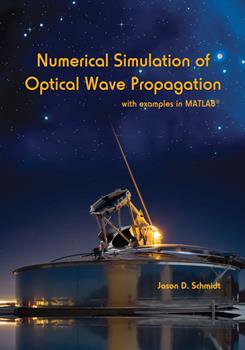|
Light can be described by two very different approaches: classical electrodynamics and quantum electrodynamics. In the classical treatment, electric and magnetic fields are continuous functions of space and time, and light comprises co-oscillating electric and magnetic wave fields. In the quantum treatment, photons are elementary particles with no mass nor charge, and light comprises one or more photons. There is rigorous theory behind each approach, and there is experimental evidence supporting both. Neither approach can be dismissed, which leads to the waveparticle duality of light. Generally, classical methods are used for macroscopic properties of light, while quantum methods are used for submicroscopic properties of light. This book describes macroscopic properties, so it deals entirely with classical electrodynamics. When the wavelength λ of an electromagnetic wave is very small, approaching zero, the waves travel in straight lines with no bending around the edges of objects. That is realm of geometric optics. However, this book treats many situations in which geometric optics are inadequate to describe observed phenomena like diffraction. Therefore, the starting point is classical electrodynamics with solutions provided by scalar diffraction theory. Geometric optics is treated briefly in Sec. 6.5. 1.1 Basics of Classical Electrodynamics Classical electrodynamics deals with relationships between electric fields, magnetic fields, static charge, and moving charge (i.e., current) in space and time based on the macroscopic properties of the materials in which the fields exist. We define each quantity here along with some basic relationships. This introduces the reader to the quantities in Maxwell's equations, which describe how electrically charged particles and objects give rise to electric and magnetic fields. Maxwell's equations are introduced here in their most general form, and then the discussion focuses on a specific case and solutions for oscillating electric and magnetic fields, which light comprises. |
|
|


